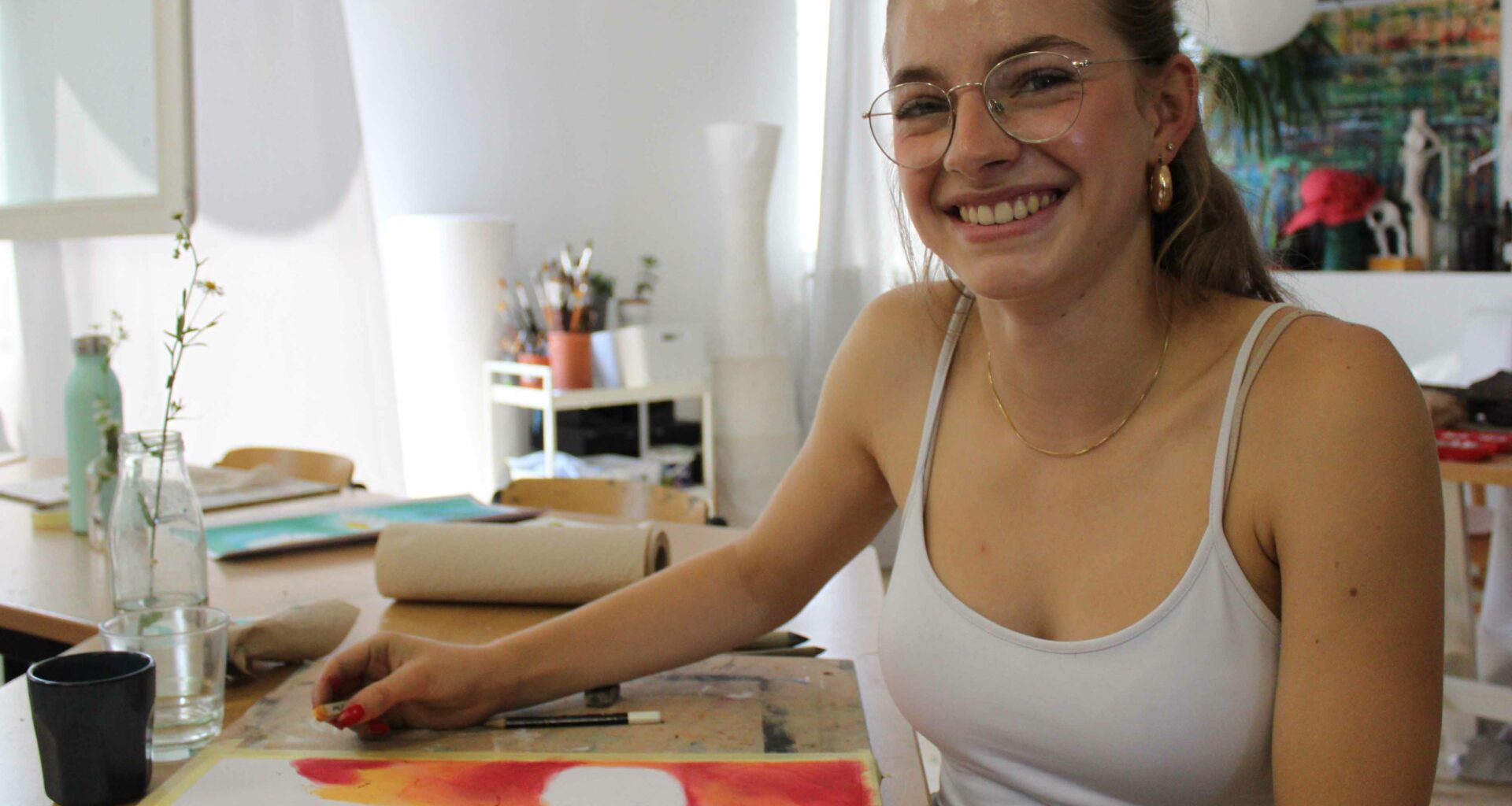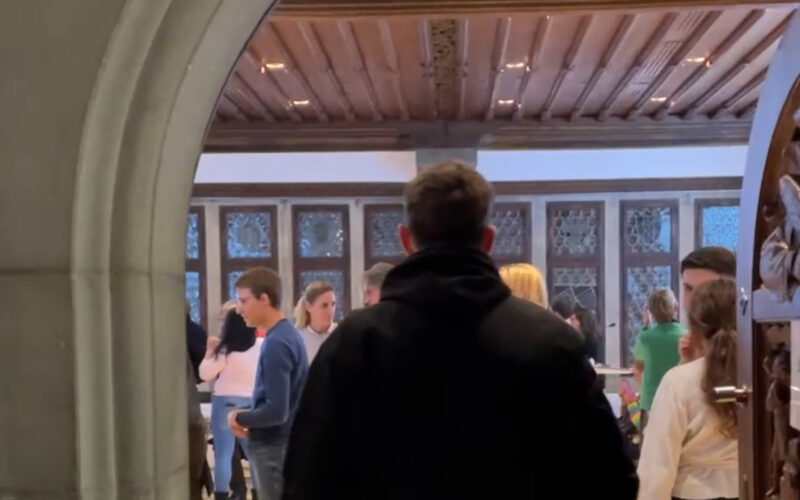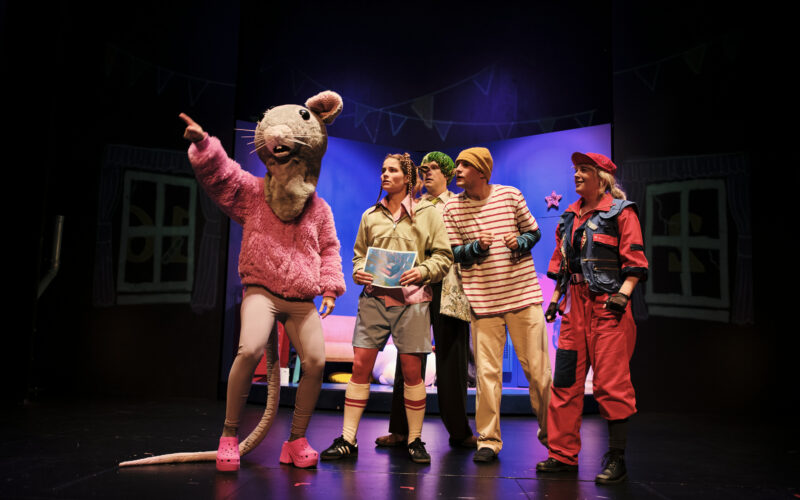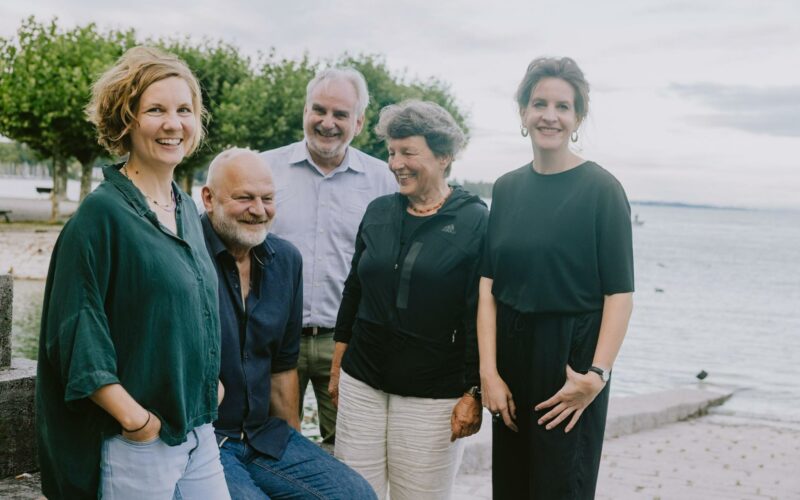- The Konstanz Art School is a creative space that was founded in 2018 to enable children, young people and adults to create art freely and without obligation.
- The founders Corinna Palz and Luise Merle encourage creativity without any pressure to perform, with the process of creation taking centre stage.
- The courses on offer range from painting for children from the age of two to art courses for adults, covering a wide range of techniques and materials.
- The school offers a space for self-development and experimental work, encouraging participants to give free rein to their imagination.
- An important co-operation exists with various local institutions to anchor the art school in the community.
- The art school aims to establish itself permanently in Constance in order to enrich and strengthen the local art scene.
„We are painting very large blossoms today,“ calls Luise Merle into the light-flooded central room of the art school at Blarerstraße 561. Several children find a spot upstairs in the former technology center at the Grenzbach area on this Thursday afternoon. One of them is nine-year-old Nelly. The girl with the long light-brown hair is in the third grade at Stephansschule and says,
„I especially like that I can learn new techniques here, the painting, and the pictures that emerge.“
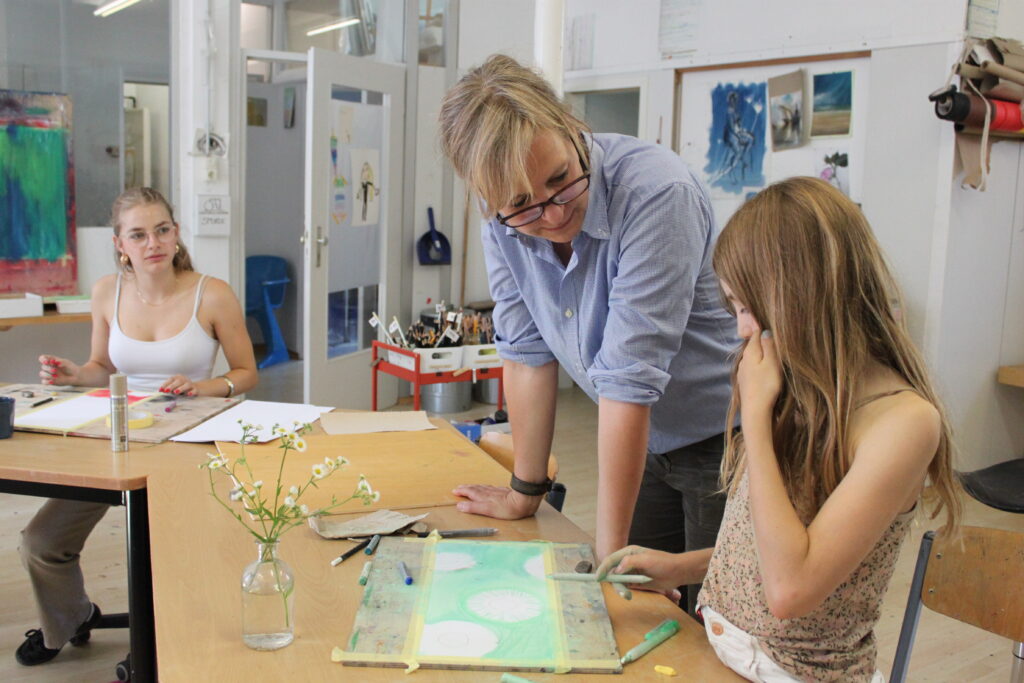
Merle brought a small sketch of flowers, quickly put to paper with green, yellow, and white chalk. In the course for elementary school children, the focus is on getting to know different materials. The children experiment with ink, oil pastels, watercolor, pastel chalk, pencil, and colored pencils, among other things. Also present is Carla Riesler, who is in the eleventh grade at the Gebhard-Gemeinschaftsschule. She is doing a one-week internship and knows the art school from her own course participation.
In the adjacent room, Corinna Palz takes care of children from the age of five. They each have a large white sheet of paper taped to the wall and are painting it with broad brushstrokes of tempera paint. Palz has completed a high school diploma in communication design and art, studied museology for a diploma, and worked in that profession for 15 years. Today she describes herself as a creative professional as well as a leader and instructor for fine arts.
Founded Seven Years Ago
The Art School Konstanz was founded in 2018. Corinna Palz explains that the art school was born out of necessity after an existing children’s painting workshop at the Ritterwerke closed. Her daughter had participated there, and when the director was looking for a successor for the studio, Palz offered herself. But the suitable premises were missing.
After an intensive search, she found Luise Merle through a flyer, who was already offering drawing courses but also lacked permanent spaces. „Painting and drawing are not competition but complement each other,“ Palz describes the idea that led to the collaboration.
The chemistry between the two artists clicked immediately. Thus arose the idea of an art school, which had not existed in Konstanz until then.
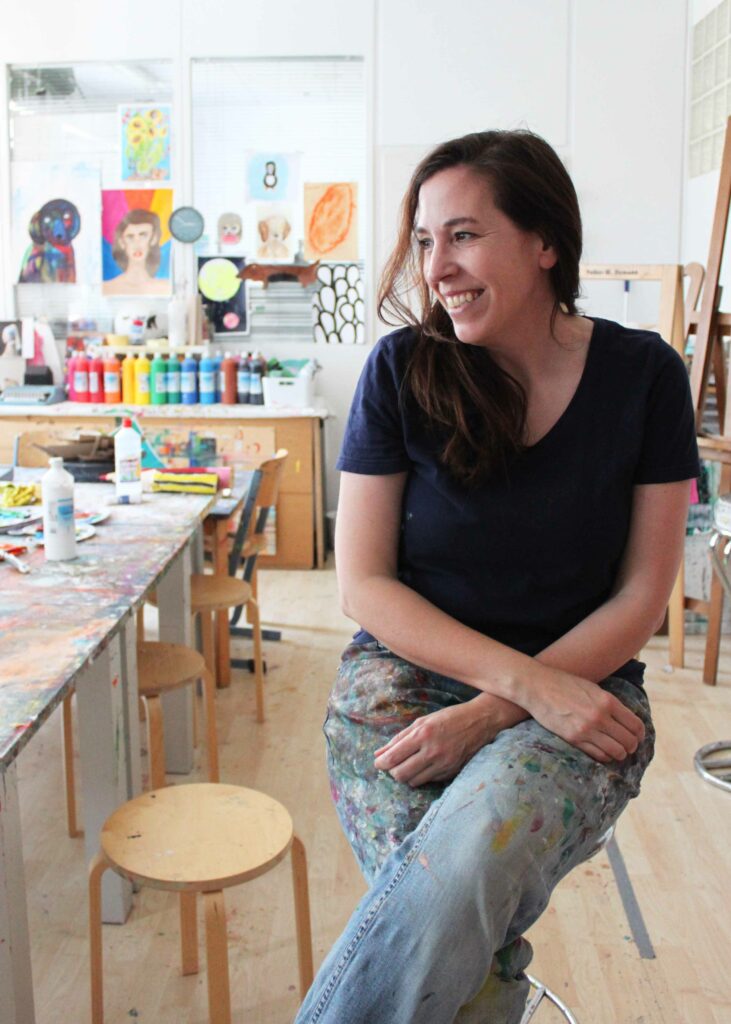
The special feature: children, adolescents, and adults are supposed to develop here free from performance pressure. „Our philosophy was clear from the beginning: it’s not about producing outstanding artists, but about promoting the joy of creative work,“ explains Luise Merle. The art school is intended to be a place where not the end result, but the creative process, is in the foreground.
Creative Offerings for All Age Groups
Today, the art school offers daily courses for children from five years old, as well as parent-child painting starting at two years. The range extends from intuitive painting to creative crafting with various materials like wood, stone, and paper. The courses take place in small groups of three to ten children, with the youngest starting at 2 p.m. to account for the natural rhythm and energy of the children. Adolescents and adults also find a diverse course selection at the art school.
„We have everything from drawing to clay work to life drawing. The variety of techniques is especially important to us,“ says Merle.
The courses for adults go into the evening hours and offer a creative break from the often hectic workday. Participants can try out different materials and develop their own style. For a long time, the two had so-called bread-and-butter jobs to cross-finance the art school. However, since this summer, Palz has increased her workload to full-time and taken the step into self-employment. Luise Merle continues to teach art and art history part-time at schools in Winterthur and Kreuzlingen.
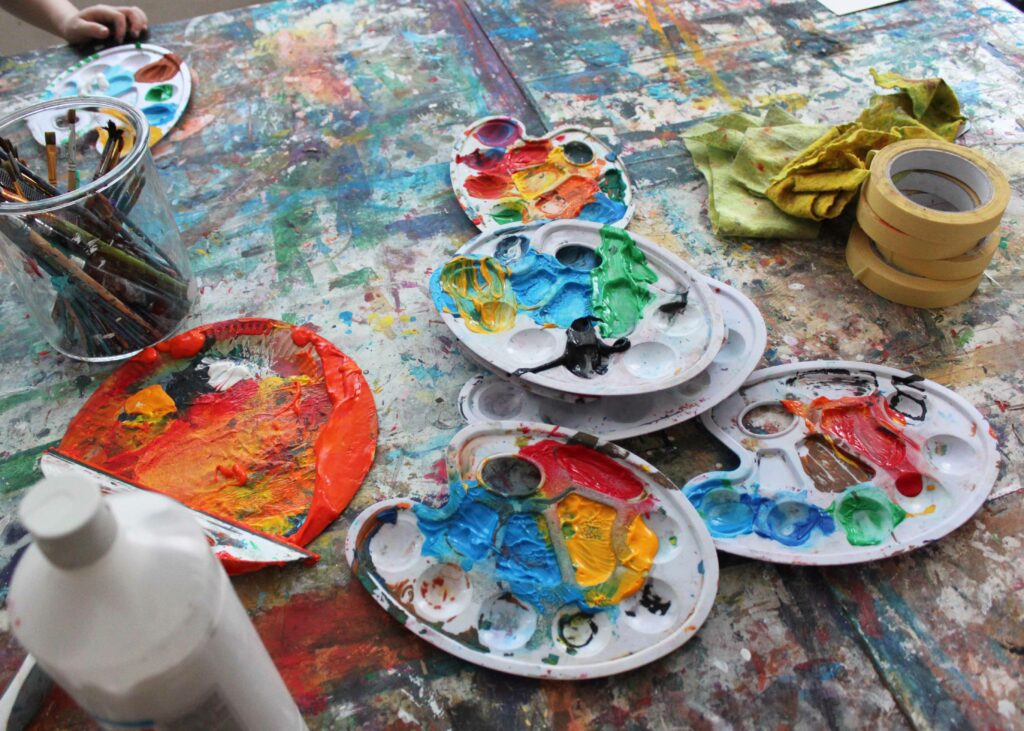
Herausforderung Finanzierung
A particular challenge, according to Corinna Palz, is that the number of participants and income fluctuate greatly. „It’s like with all clubs or afternoon programs: children come and go, adults and their interests change.“ In addition, there are administrative tasks such as accounting, course inquiries, and coordinating instructors, which take up a lot of time.
When asked about her superpower, Palz replies, „It’s my calmness and composure with the children. When they come from school, they are still very active, and then it’s about calming down first.“ The nicest compliment is when the little ones start to sing or hum. „Then I know that the child is completely at ease.“ She believes it is enormously important to bring something tactile into the digital world and to take the children away from „must-dos.“
„There’s nothing you have to do. Everything can, nothing must. It’s also okay if they just want to talk about how their day was or what is currently on their minds.“
To drive the growth of the art school, the founders have now even taken the next step. „We have expanded the first floor to increase our course capacities. It is indeed an entrepreneurial risk, but we believe in our concept,“ says co-founder Merle. In the summer, a woodworking workshop was added, and for the coming months, a darkroom for analog photography is planned. The stated goal: slow growth in all directions.
A Space for Freedom and Self-Development
A central element of the art school is the freedom offered to participants. The children have room to let their imaginations run wild and try things out without someone looking over their shoulder and evaluating them. „Here they can splatter, spray paint, and work on a large scale. That is often not possible at school or home.“ The goal is to move children away from a standardized and goal-oriented approach and allow them to just be and experiment.
They can take paint from small tubes or large bottles. They can use thin brushes—or wide ones. „It’s important to find out what happens when you put paint on paper. How does it behave? Do the colors flow together or smear? It’s about turning off the head and simply letting the imagination run free,“ explains Corinna Palz.
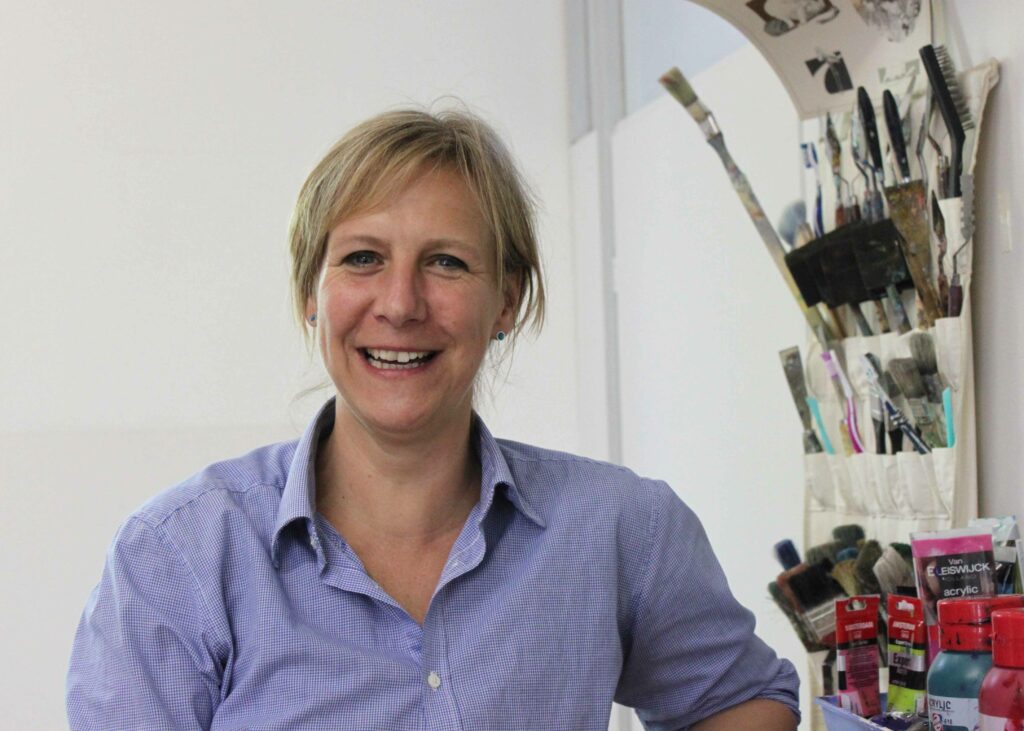
For adults, too, the art school is a retreat. „Many come stressed from work and leave with a smile,“ says Merle. The courses are not designed for artistic prerequisites but are open to anyone who wants to be creative. The process of creating is more important than the result, summarize the two founders the philosophy of the art school.
The art school is not only a place for creative work but also a space for community. Especially among adults, long-term groups often form, inspiring and supporting each other. „For me, it’s not about producing top-notch artists. Our goal is rather that people enjoy coming and simply doing something for themselves—especially the adults.“
In the Thick of It Instead of Just Watching
Occasionally, you can spot a group with sketch pads, clipboards, and folding chairs in the city. Then Luise Merle goes out into nature and draws the city: „When we go to the pedestrian zone, there are always gatherings of tourists who say to the children, ‚Oh, how cute!‘ and look at what the children are painting. That always makes me particularly happy.“ Always in tow: a handcart carrying all the necessary utensils like water, cups, paper, brushes, and paints.
The art school cooperates with the cultural office, the city of Konstanz, the university, the Wessenberg Gallery, and other museums in the city. Life drawing is a perennial favorite course offering—simply because it is not available regularly. Portrait drawing and working with clay are also very popular. A special highlight was participation in the youth art prize, where a student of the art school even made it to the final selection.
In principle, it is planned to fundamentally redevelop the Grenzbach area where the art school is currently located (we reported). But there are differing reports on when the associated building will be demolished.
„At first, it was said that it would be demolished immediately—and now we’ve been here for three years.“
The two directors walk through the city with open eyes, but it is extremely difficult to find something suitable. The interim use in the former Zoffingen girls‘ school, as is well known, eventually came to an end.

The founders are therefore looking for a permanent location and are dependent not least on the city’s help. What would happen if there were no longer an art school in Konstanz? „I would miss the contact with the different people very much,“ says Merle. It is refreshing to try new techniques again and again and to deal not only with students but also with adults. In her opinion, every city needs—besides clubs and a music school—an art school to „be creative together,“ as their motto says.
An important milestone is in November—after almost seven years—the admission as a permanent member of the State Association of Art Schools Baden-Württemberg. Luise Merle says, „With that, we have succeeded in making a creative white spot colorful. We are very proud of that. In short: We came to stay.“
Each of the two founders offers about ten different courses per week. In addition to Merle and Palz, there are other freelance instructors who expand the offerings. Children can attend courses from the age of two up to their teenage years. There is no age limit for adults. The oldest participant is 86 years old.
The participation fee varies and starts at 55 euros per month per course (for children) and goes up to 69 euros (for adults). Regular courses do not take place during the holidays. Instead, special holiday courses are offered, for which one can register via the website or social media.
If you just want to take a look around the art school, the „open studio“ might be the right choice. Here, even toddlers can experiment with colors and can come by without registration on the first Friday of every month between 2 p.m. and 5 p.m. The remuneration is based on donations.
- Transparency note: This article was translated into English with the help of ChatGPT. ↩︎
Du willst mehr karla?
Werde jetzt Mitglied auf Steady und gestalte mit uns neuen Lokaljournalismus für Konstanz.
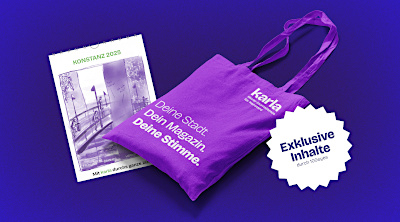
Oder unterstütze uns mit einer Spende über Paypal.![]()
